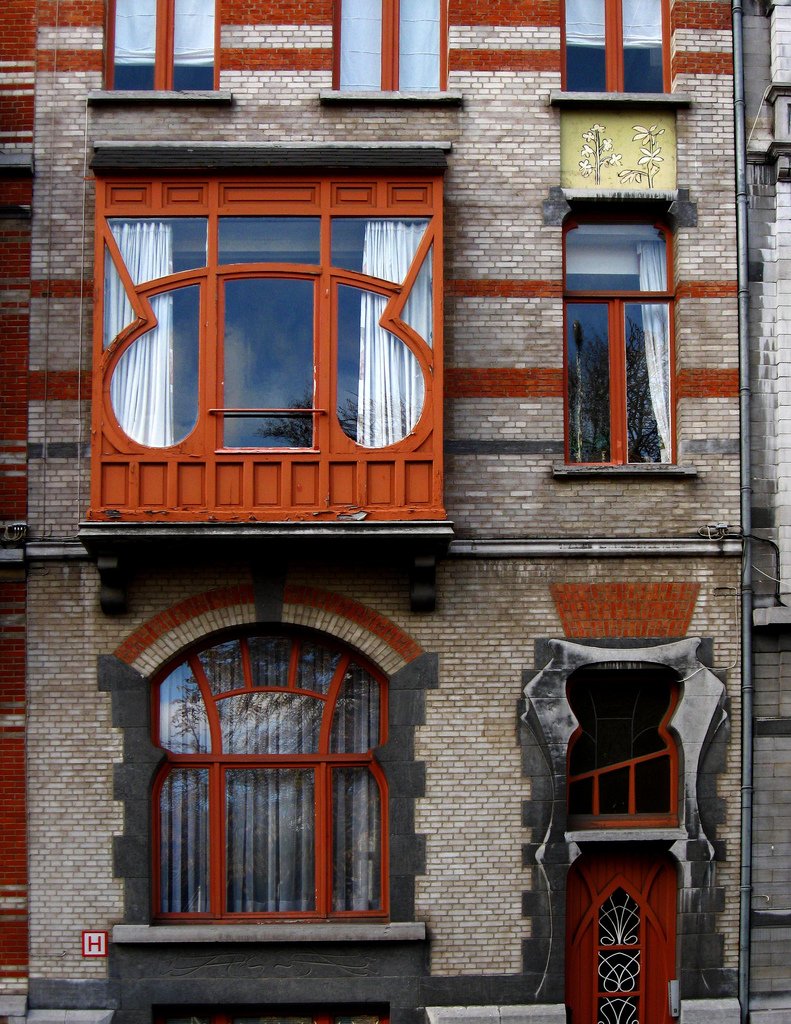#4630. Elegant Art Nouveau Facade with Characteristic Organic Window Forms
What we see here is a striking example of Art Nouveau architecture, likely from the early 20th century. The facade of the building presents a masterful combination of various materials and decorative elements. The base is made of light-colored brick with distinctive red-brick horizontal stripes, creating a rhythmic pattern across the entire facade.
The windows with wooden frames in a warm terracotta shade deserve special attention. The main bay window on the second floor demonstrates the typical Art Nouveau flowing, organic lines reminiscent of plant motifs. The curved elements of the frame form an asymmetrical yet harmonious pattern. Below this bay window is an arched window on the first floor with an expressive frame.
To the right is an unusual entrance portal, also designed in Art Nouveau style with characteristic curvilinear forms. The door is adorned with elegant filigree ornamentation. Above the entrance is an expressive window with an organic frame made of stone or concrete, and higher up - another window with a yellow decorative panel featuring stylized plant motifs.
The facade demonstrates the core principles of Art Nouveau: rejection of straight lines in favor of fluid, "organic" forms inspired by nature; bold use of new materials and technologies; and attention to decorative details. The building represents an excellent example of urban Art Nouveau architecture that has maintained its originality and artistic value.
